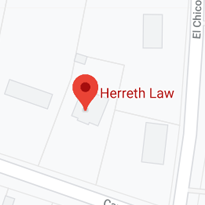If officers have probable cause, they can demand that DWI suspects provide chemical breath or blood samples which determine their Blood Alcohol Content. If the BAC level is above the legal limit, which is usually .08, the defendant might be guilty as a matter of law. About 80 percent of DWI suspects provide chemical samples.
So, in about a fifth of these cases, Parker County prosecutors normally rely on circumstantial evidence from the three approved field sobriety tests. Officers sometimes administer unapproved tests, like the Rhomberg balance test (head back and eyes closed) or the reciting-the-ABCs test. But these test results are often inadmissible in court.
If a Weatherford criminal defense attorney can effectively undermine the FST results, it is much easier to successfully resolve DWI charges. That successful resolution could be a dismissal of charges or a not-guilty verdict at trial.
Horizontal Gaze Nystagmus
When officers administer the DWI eye test, the look for involuntary pupil movements at certain viewing angles. If the subject displays more than two or three such clues, the subject probably has nystagmus. Substance impairment is one cause of nystagmus.
That portion of the HGN test is scientifically valid. The rest, however, is much more uncertain. As a result, some Parker County judges only admit HGN results for limited purposes.
Substance impairment is not the only cause of nystagmus, a condition also known as lazy eye. Genetic conditions and childhood brain injuries cause most nystagmus cases. In fact, many people have a lazy eye. But the symptoms are so mild they do not know it.
Additionally, environmental factors significantly this test. Officers generally administer this test at night. Furthermore, the flashing squadcar lights in the background cause flicker vertigo. This condition sometimes affects the eyes.
Heel to Toe Walk
The HTW, which is also known as the walk-and-turn (WAT), might be the signature DWI field test. Subjects must walk a straight line heel to toe forward and backward. During the test, officers look for intoxication clues, such as:
-
Beginning the test before the officer says “start,”
-
Failure to take each step heel to toe,
-
Swaying during the test,
-
Using arms for balance,
-
Taking the incorrect number of steps, and
-
Ending the test before the officer says “stop.”
Once again, environmental factors significantly affect this test. It’s almost impossible to walk an imaginary line heel to toe, whether the subject is drunk or sober. It’s very difficult to walk an actual line heel to toe in anything other than athletic shoes, especially if the surface is not perfectly flat.
One-Leg Stand
Like the HTW, the OLS is a divided attention test. It measures both physical dexterity and mental acuity.
Test subjects must elevate one leg at about a 45-degree angle for about fifteen seconds. During the test, they must keep perfectly still and not use their arms for balance.
The same environmental flaws apply to this test. Additionally, the OLS is usually the last test in the three-test battery. By this time, defendants are physically and mentally fatigued. Their tiredness affects their performance on the OLS.
DWI field tests are not always conclusive proof of intoxication. For a free consultation with an experienced criminal defense attorney in Weatherford, contact Herreth Law. We routinely handle matters in Parker County and nearby jurisdictions.

